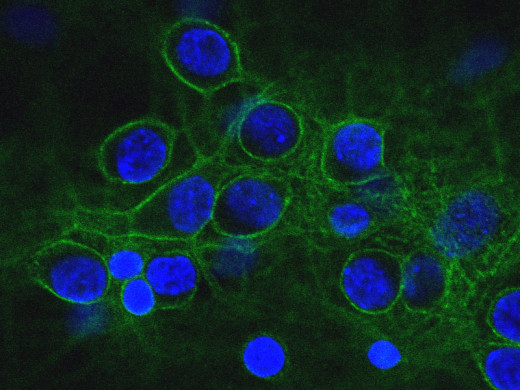Do ghosts really exist? A Multi-Disciplinary Approach

Lets talk the Basics
In the semi-theoretical field of theology, various religions cling to a higher power that guides them through life with hopes that a better place, an afterlife that offers dreams and a future of happiness or hellish proportions that one can only imagine. The concepts of spirits, ghosts, gin, demons, angels, or other similar facets continue to boggle us beyond our realm of realistic setting. Can it be that spirits and other “figments of our imagination” do indeed exist, sometimes right beside us or inside our very bodies. Science has become the steadfast reality that most bind themselves to, theoretical knowledge tested and retested to find that next small step to future innovations.
Micro-Biology and it's impact on what it defines as a “Ghost”
Various religious viewpoints, scientific realizations, and of course philosopher jargon all point to a state of being outside of ourselves that can and do exist. In Microbiology, there is a specific mesh-work that line the outside of a red blood cell in Eukaryotic cells, known as Spectrin. Even though spectrin can be seen under a normal light telescope as a very blurry entanglement of mesh of interconnected plasma around red blood cells, there is not much of a visual. With the more recent use of Immuno-florescence, microbiologists had mastered the technique that attempts to target such processes as expressing the antibodies in an antigen.
There is a more interesting function that has slightly baffled scientists, Erythrocytes. In humans, research has been found in the Influenza virus process that uses fusion when placing itself within the cytoplasm of the host. By fusing the Influenza virus within the cytoplasm, it shows that such a process is used to interact with a ghostlike mesh-work of plasma and gaseous fluid. In theory, would be classified as a Ghost per say, even though it can be found using fluorescence to interact with Erythrocytes, thus making it visible to the human eye. In Micro-Biology, this could be the ghost that we are all looking for, but yet it is inside ourselves.
Rumi, a Persian poet in the 13th Century once said:
“The Universe is not outside of you. Look inside yourself; everything that you want, you already are.”
So to continue with less regard to the microbiology, we must continue into what exactly is fusion and how it is used on a molecular level.
Spectrin Localization using Immuno-Florescence

What is Fusion?
In the world of Science, there has been more interest as of late to create energy using a process called Fusion. It is, by Chemistry's definition,
“Combining lighter atomic Nuclei to form a heavier nucleus.” (About.com)
In a more general term, it can also be called a process of Synthesis. In respect to its process, it can be done by many different natural and artificial processes, although for this article concerning otherworldly beings, we must look at a molecular example. As we all know, electromagnetic waves and audible/inaudible frequencies are found everywhere across the planet. Some waves create what we see as light, from the sun's energy to the earth's natural magnetic field that spans from within to what causes the moon to circle our planet.
In the classic Ghost-buster theme, the group of men go around hunting ghosts, using what they say is a Plasma-Containment device. In theory, and even with today's current technology, this proves nearly impossible but one such technique is proving itself to be quite advancing, “Magnetic Confinement Fusion”. It's process involves the use of natural atmospheric gases such as hydrogen, which is a lighter atomic nuclei than what it would create such as helium but in a plasma-containment state.
The more intricate process involves extremely high temperatures. Short duration blasts cause the atomic nuclei of a lighter atmospheric element or artificial one to become an element difference and atomic nuclei variant all together. The process also attempts to contain the fusion of said elemental bombardments using its natural electrical conductivity to keep said elements from being repulsed from each other, thus staying visible and contained.
What is your take on the situation?
Do you believe in Spirits and otherworldly creatures?
Religion and various Supernatural States
In the world of various theological studies, the notion of otherworldly beings from a semi-permanent state to complete transparency is talked of in very real regard. Many religions talk of beings that can come and go from this planet, from one reality to another. To add to this, it is also interesting to note that they can do both good and evil depending on the type of entity and it's intentions. If a conceptual entity does indeed exist, could it express emotion on the level that we as humans can, or would it's sole purpose be to aid or destroy our wellbeing. A quote from the Holy Bible exclaims entities as such:
Ephesians 6:12 “For we wrestle not against flesh and blood, but against principalities, against powers, against the rulers of the darkness of this world, against spiritual wickedness in high places.”
In Christianity, various sects of the faith believe in Angels, or winged, human-like entities that could be visible or invisible. They could come to aid a human and are known as Guardian Angels, protecting them from harm and guiding them through life. Other entities involved with the faith are called lost souls, or ghosts that roam the planet in a version of hell that replays over and over, also called residual spirits by Ghost Hunters around the world. The much sinister entities are known as demons, those able to possess a human, or simply cause complete chaos and manufacture physical features and/or manipulate physical objects in our reality.
In the Muslim faith, the belief of the Jinn, Spirits that have a freewill, can be either of good purpose or do bad deeds. Another more ancient name for them comes from the word Janna, meaning to Hide and Conceal, otherwise known as transparent and not of one's perception of reality. In the Quran, Jinn have been quoted as:
Ar-Rahmaan 55:15 ; 15
“He created man (Adam) from sounding clay like the clay of pottery.
And the jinn did He create from a smokeless flame of fire.”
Although Jinn have a free will, some are worse than others, called Afreet; the biblical equivalent to this being a demon, or Poltergeist. It is interesting to note that although the bible exclaims it being either Angels or Demons, the Muslim faith prefers to allow Jinn's of all types to be judged on the same basis as humans among the planet around them.

So are spirits even real?
In it's entirety, it seems as though both Science and Religion alike all point to spirits of one sort or another. In a scientific aspect, if spirits are real, then how could they even be contacted? Could it be using the use of Electromagnetic waves and frequencies that are beyond a human's cochlea and vestibulocochlear nerve system? Even then, how could one even potentially visualize what a spirit or other transparency? Without the inconclusive use of Immuno-florescence, Electromagnetic pulse differentiation, or any interruption in their supposed fusion-like nature, we may never know. Until then, it seems as though religion and science will differ in their views of fact vs. fiction, theological belief and the Scientific Method, or simply a Pandora's Box we may not ever want to truly open.
Sources Used in Article
- Spectrin | Sigma-Aldrich
Spectrin is the major component of the protein network, which covers the cytoplasmic surface of vertebrate, erythrocyte membranes. It is a high molecular weight heterodimer, composed of two subunits (molecular weights of approximately 230 kDa and 250 - Spectrin, human erythrocyte shapes, and mechanochemical properties.
- red blood cell | biology | Britannica.com
Cellular component of blood, millions of which in the circulation of vertebrates give the blood its characteristic colour and carry oxygen from the lungs to the tissues. The mature... - ITER - the way to new energy
ITER Organization - Magnetic confinement fusion - Wikipedia, the free encyclopedia
- Electromagnetic pulse - Wikipedia, the free encyclopedia
- What Does the Bible Say About Evil Spirits?
Bible verses about Evil Spirits - The World of the Jinn (All parts) - The Religion of Islam
An introduction to the occult activities of the Jinn and how to get protection from them., A brief introduction about the existence and abilities of Jinn. This web site is for people of various faiths who seek to understand Islam and Muslims. It cont



